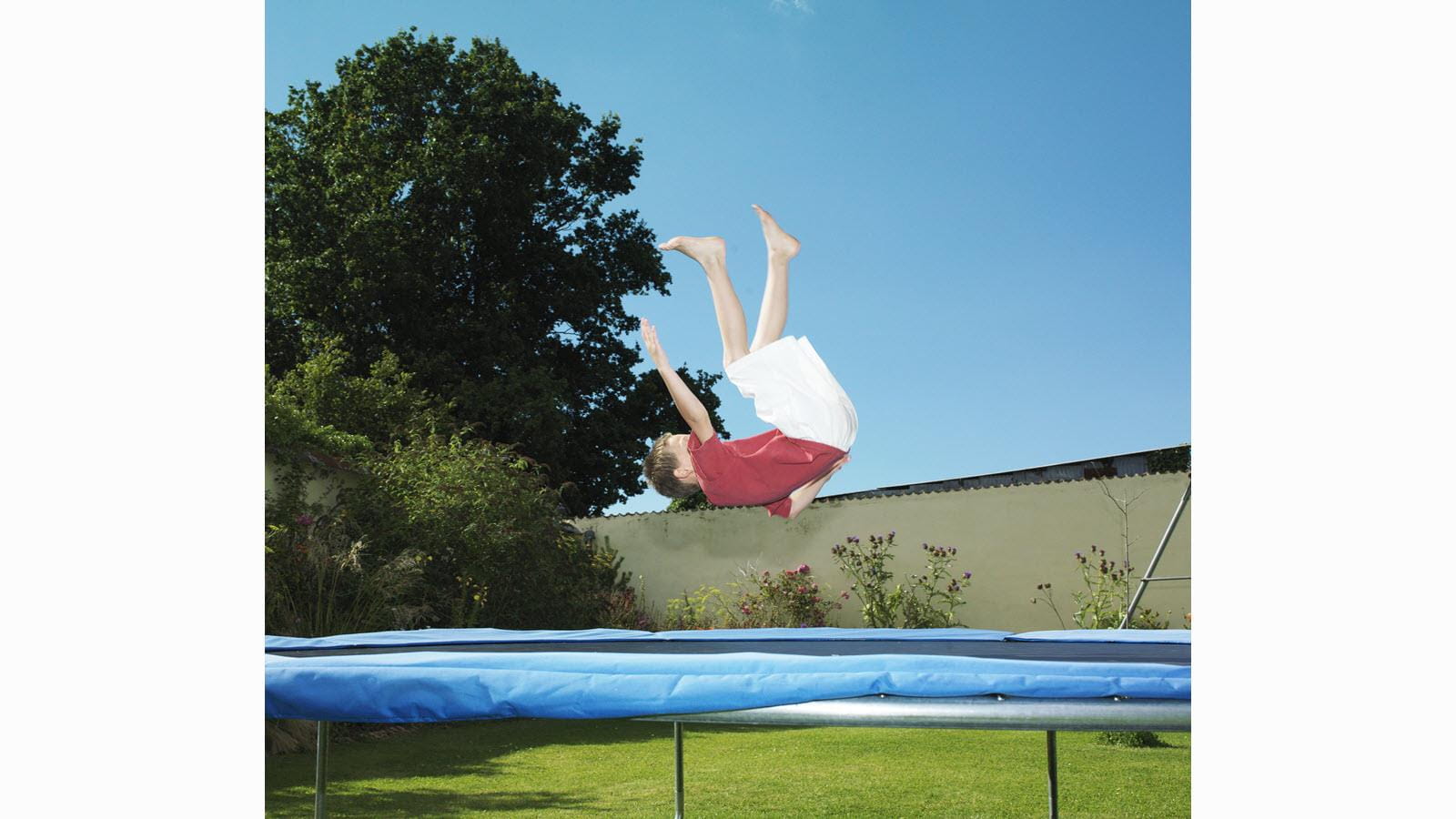The average kid yearns to jump on a trampoline or in a bounce house, but experts say the risks outweigh the fun.
For a child who has a bleeding disorder, trampolines and bounce houses can be as risky as boxing or football, according to the National Hemophilia Foundation’s guide “Playing It Safe: Bleeding Disorders, Sports and Exercise.”
The guide doesn’t issue outright bans on any activity, but it uses a three-point system to identify higher risk activities. The NHF provides the guide to promote healthy physical activity for those who live with conditions like hemophilia, which means a person is at risk of excessive bleeding.
The NHF’s advice on trampoline usage is clear and direct: “Injuries may occur even with adult supervision. The most common injuries are broken ones, sprains/strains, bruises, concussions, and head and neck injuries.”
The NHF based its recommendation on a general one from the American Academy of Pediatrics (AAP) that discourages trampoline use for all children, even those who don’t have health conditions.
“Don't buy a trampoline for your home! Trampolines may be popular and a fun way to get exercise, but there are safer ways to encourage your children to be physically active,” the AAP says.
The NHF rates inflatable bounce houses as risky as trampolines.
“Children can easily collide with each other in a bounce house that is too crowded, or can land incorrectly after a jump,” the Playing It Safe guide says.
Time in an inflatable bounce house can be made safer by removing shoes, glasses and jewelry. Grouping kids by size is another safety note from the NHF. Trampolines can be especially risky if the equipment is not well maintained, including padding, and if trampolines are high off the ground.
The NHF guide offers a wide range of alternatives. Lower risk activities include swimming, golf, rowing, hiking and archery. Even something like indoor rock-climbing can be made safer with trained staff and the right equipment, the guide says.
“Climbing on indoor walls and challenge courses with proper instruction and supervision can provide a safe environment,” according to the NHF.
Learn more about the activity ratings in the Playing It Safe guide: https://www.hemophilia.org/sites/default/files/document/files/Playing-It-Safe.pdf



